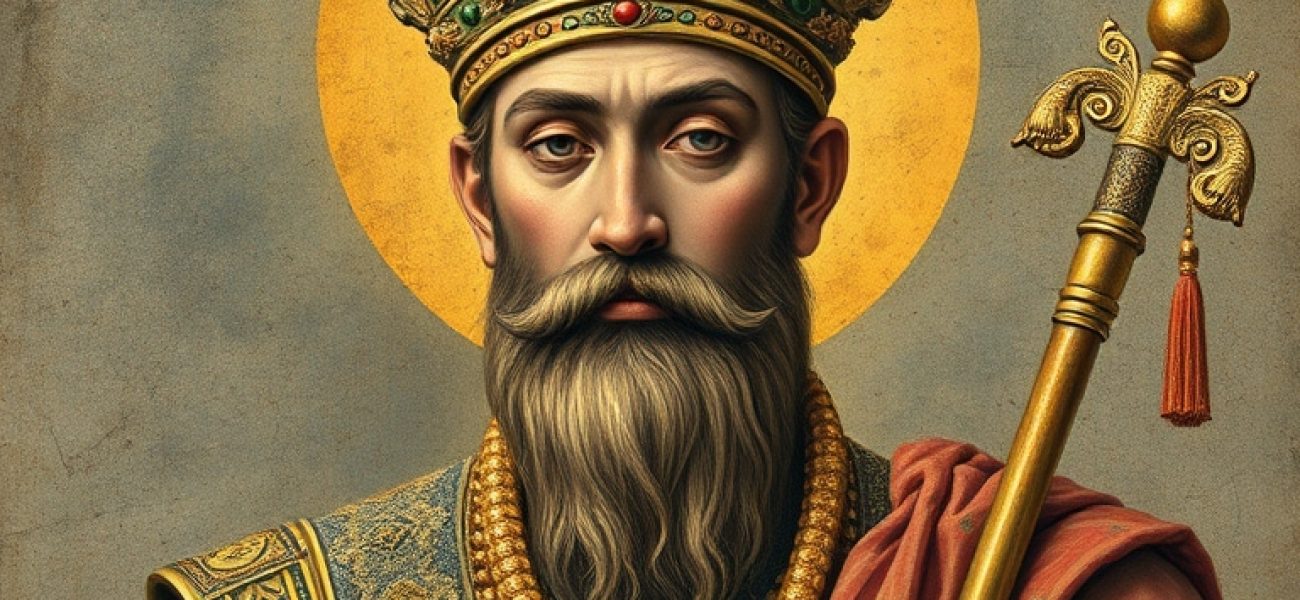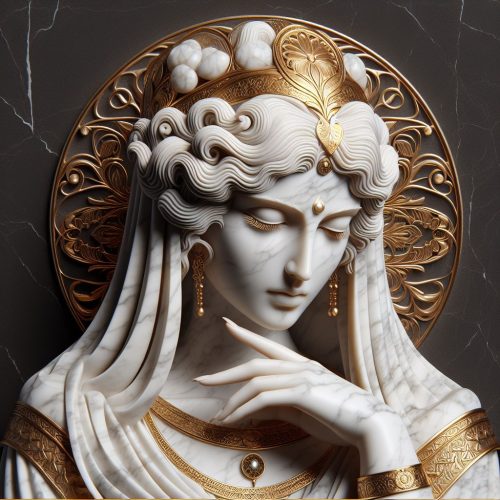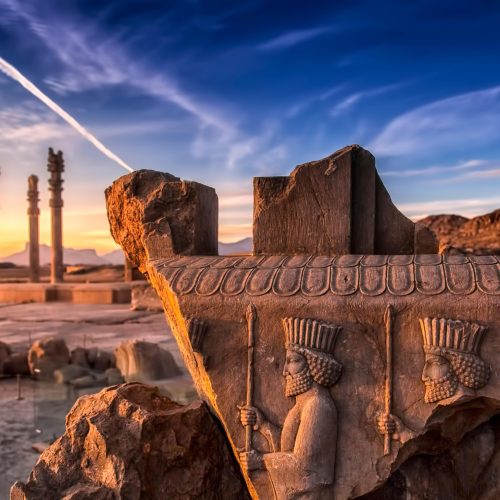By Dr. Mehrdad Rostamian
Iranian Historical Studies Journal
In the vast tapestry of Iranian history, few figures loom as large and enigmatic as Shapur I, the second monarch of the Sassanid Empire, whose reign marked a transformative period of cultural, military, and political renaissance. To understand Shapur I is to unravel the complex threads of an era when Iran stood at the crossroads of civilizations, wielding unprecedented power and cultural influence.
Etymology
The name Šāpur (شاپور) carries profound linguistic significance, deriving from the Middle Persian compound “šāh-pūhr” (شاه پور), which translates to “son of the king” or “royal offspring”. This etymological nuance provides an immediate glimpse into the dynastic expectations and royal lineage that defined Shapur’s existence from birth. The name itself becomes a symbolic representation of imperial continuity, a linguistic marker of royal heritage that would come to define an entire epoch of Iranian history.
Background and State of Iran
The Iran of Shapur I’s era was far more than a mere geographical entity—it was a complex, vibrant civilizational crucible where multiple historical currents converged. Following the tumultuous period of Parthian rule, the emergence of the Sassanid Empire represented a profound moment of cultural and political regeneration, a deliberate and meticulously crafted renaissance of Iranian imperial identity.
Geopolitical Landscape
The geopolitical context was characterized by extraordinary complexity. To the west, the Roman Empire loomed as a persistent rival, its legions casting long shadows across the Iranian plateau. To the east, a mosaic of kingdoms and nomadic confederations created a dynamic and often unpredictable frontier. Iran was not merely a passive recipient of these external pressures but an active, transformative force that shaped and was shaped by these interactions.
The Sassanid state emerged from the deliberate political project of Ardashir I, Shapur’s father, who sought to restore what he perceived as the authentic Iranian imperial tradition interrupted by Alexander’s conquest and subsequent Hellenistic and Parthian periods. This was not simply a political restoration but a comprehensive cultural reimagining—a complex process of historical reclamation and reinvention.
Societal Structure
Iranian society during this period was highly stratified yet remarkably dynamic. The shahrigan (nobility) formed a powerful aristocratic class with significant political and economic influence. Below them, a complex hierarchy of priests, warriors, administrators, merchants, and artisans created a sophisticated social ecosystem.
Zoroastrianism was not merely a religious system but the fundamental organizational principle of society. It provided a comprehensive worldview that integrated theological, ethical, and political dimensions. The mobadan mobad (chief priests) wielded enormous cultural and intellectual influence, their role extending far beyond religious administration into philosophical and administrative domains.
Economic Complexity
The Iranian state under the early Sassanids represented an economic marvel. The Silk Road was not just a trade route but a complex network of cultural and economic exchange. Iranian merchants, craftsmen, and administrators were key architects of a global economic system that stretched from China to the Mediterranean.
Agriculture remained the economic backbone, with sophisticated irrigation systems—many inherited and improved from Achaemenid and Parthian periods—transforming landscapes. The dehqan class of landed gentry played a crucial role in agricultural management and local governance.
Intellectual and Cultural Dimensions
This was a period of remarkable intellectual ferment. The Iranian state was not merely a political entity but a comprehensive cultural project. Universities and scholarly centers in cities like Gondishapur represented global centers of learning, where Greek, Indian, and Iranian intellectual traditions intersected and cross-pollinated.
The Persian language was undergoing significant transformation, with Middle Persian (Pahlavi) emerging as a sophisticated literary and administrative language. This linguistic evolution was itself a form of cultural resistance and reimagination, reclaiming linguistic space that had been contested during previous foreign dominations.
Religious Landscape
While Zoroastrianism was the state religion, the Iranian state demonstrated a remarkable degree of religious tolerance unprecedented for its time. Jewish, Christian, and Buddhist communities existed within the empire, often enjoying significant autonomy. This religious pluralism was not weakness but a sophisticated form of imperial management.
The theological debates within Zoroastrianism itself were complex and dynamic. Different schools of thought competed and collaborated, creating an intellectual environment of extraordinary richness. The concept of asha (cosmic order and righteousness) was not a static theological principle but a living, evolving philosophical framework.
Military and Administrative Innovation
The Iranian state under the early Sassanids represented a significant leap in administrative and military organization. The military was not merely a fighting force but a comprehensive social institution. The savaran (elite cavalry) were more than warriors—they were a professional class with significant social and political implications.
Administrative divisions were sophisticated, with a nuanced system of provincial governance that allowed for significant local autonomy within a centralized framework. This was a model of imperial administration that balanced centralized power with local adaptability.
A Dynamic Civilizational Project
The Iran that Shapur I inherited and would dramatically transform was thus not a static entity but a dynamic civilizational project. It was a complex ecosystem of cultural, political, economic, and intellectual interactions, continuously negotiating its identity between preservation and innovation.
Shapur I would not merely rule this state but would become one of its most profound architects, pushing its boundaries—both literal and metaphorical—to unprecedented horizons.
Early Life and Co-rule
Born into the royal Sassanid dynasty, Shapur’s early life was meticulously prepared for imperial leadership. From childhood, he was immersed in a rigorous education that blended military training, philosophical education, and administrative preparation. His relationship with his father, Ardashir I, was not merely familial but deeply political—a strategic mentorship designed to ensure seamless imperial succession.
The period of co-rule with Ardashir was a masterclass in imperial transition. Unlike many historical monarchies where succession was marked by conflict, the Sassanid model emphasized gradual, deliberate transfer of power. Shapur was not merely a heir-apparent but an active participant in governance, learning the intricate arts of statecraft, diplomacy, and military strategy.
Military Career: A Symphony of Conquest
Shapur I’s military career was nothing short of symphonic—each campaign a carefully orchestrated movement of strategic brilliance. His military philosophy transcended mere territorial expansion; it was a holistic approach that integrated military conquest with cultural assimilation and administrative sophistication.
The Eastern Front
The eastern territories presented unique challenges and opportunities. Here, Shapur demonstrated exceptional diplomatic and military acumen. Unlike many conquerors who sought mere subjugation, he established intricate networks of alliance, incorporating local elites into the imperial framework and creating a model of expansionist governance that was remarkably nuanced.
First Roman War
The first Roman war under Shapur’s leadership was a masterpiece of strategic planning. In 244 CE, he engaged Emperor Gordian III in a series of confrontations that would become legendary in military annals. The Battle of Mesiche was not just a military engagement but a statement of Iranian military superiority, resulting in Gordian’s death and a significant territorial expansion.
Second Roman War
The second Roman war, particularly the conflict with Emperor Valerian in 260 CE, represented the pinnacle of Shapur’s military achievements. The capture of Valerian—the first Roman Emperor taken prisoner—was more than a military victory. It was a profound psychological triumph that resonated across the Mediterranean world, fundamentally altering perceptions of Roman military invincibility.
Interactions with Minorities and Roman Prisoners
Shapur’s approach to conquered populations was remarkably progressive for his time. Roman prisoners were not merely captives but potential contributors to Iranian civilization. Many were integrated into Iranian society, employed in construction, crafts, and administrative roles. This approach transformed potential resentment into a form of soft power, creating networks of cultural exchange that would have long-lasting implications.
Religious and ethnic minorities within the empire experienced a relatively tolerant governance model. While Zoroastrianism remained the state religion, Shapur demonstrated a pragmatic approach to religious diversity that was uncommon in the medieval world.
Government and Administration
The governmental structure under Shapur I was a marvel of administrative sophistication. A complex bureaucracy managed an empire spanning multiple linguistic and cultural regions. Provincial governors were carefully selected, often from aristocratic backgrounds but chosen for merit and administrative capability.
Key officials during his reign represented a meritocratic system that valued competence over pure hereditary privilege. The mobadan mobad (chief of Zoroastrian priests) and eran-spahbad (commander-in-chief) were crucial positions that balanced religious, military, and administrative functions.
Army and Military Organization
The Sassanid military under Shapur was a professional, well-organized force that represented the technological and strategic apex of its time. Heavy cavalry—the infamous cataphracts—formed the core of military power, representing a perfect synthesis of mobility and armored strength.
Monuments and Cultural Legacy
Shapur’s architectural and cultural monuments were not merely decorative but powerful statements of imperial ideology. The magnificent bas-reliefs at Naqsh-e Rostam and Bishapur are not just artistic expressions but complex narratives of imperial triumph, diplomatic relationships, and cultural sophistication.
Religious Policy
Religious policy under Shapur I was characterized by a nuanced understanding of faith as a unifying and organizing principle. Zoroastrianism was promoted not through coercion but through sophisticated institutional support, creating a religious framework that was both spiritually meaningful and politically strategic.
Coinage and Imperial Ideology
The imperial coinage during Shapur’s reign was a remarkable medium of political communication. Each coin was not merely a monetary instrument but a carefully crafted message of imperial legitimacy, cultural identity, and economic power.
Cultural Depictions
In the centuries following his reign, Shapur I emerged as a legendary figure in Iranian collective memory. Poets, historians, and storytellers would transform his historical persona into a mythic representation of Iranian resilience, strategic brilliance, and cultural sophistension.
A Transformative Legacy
Shapur I was more than a monarch; he was an architect of civilization. His reign represented a critical moment when Iranian identity was not just preserved but dramatically reimagined and projected onto the global stage of the third century.
His legacy is not merely historical but continues to resonate in contemporary understandings of Iranian cultural and political identity. He represents a model of leadership that balances military might with cultural sophistication, territorial expansion with administrative complexity.
As we reflect on Shapur I, we are reminded that true imperial greatness is not measured by conquered territories but by the depth of cultural transformation and the enduring spirit of a civilization.
Dr. Mehrdad Rostamian is a senior researcher in Sassanid Studies at the Tehran Institute of Historical Research.




